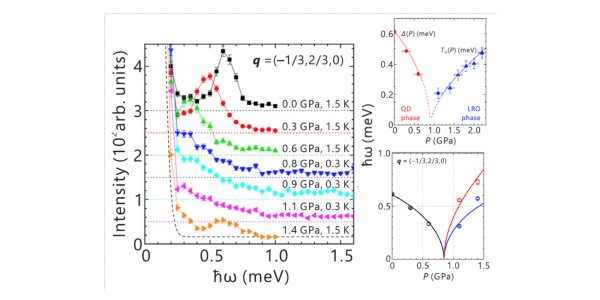Novel Excitations Near Quantum Criticality in CsFeCl3

Scientific Achievement
At a critical pressure pc » 1 GPa the triangular lattice antiferromagnet CsFeCl3 shows a quantum critical point (QCP) transition from a disordered local singlet phase to a noncollinear ordered phase; near pc the magnetic excitations are hybridized mixtures of transverse (T) and longitudinal (L) fluctuations of the ordered moments.
Significance and Impact
This work implies mixed phase and amplitude fluctuations, resulting in L-T hybridization, may significantly affect the physics in many different QCPs associated with noncollinear ordered phases.
Research Details
- Inelastic neutron scattering was used to measure magnetic excitations in a single crystal of CsFeCl3 as a function of applied hydrostatic pressure.
- Neutron spectra were modeled using an extended spin-wave theory including L-T mixing.
“Novel excitations near quantum criticality in geometrically frustrated antiferromagnet CsFeCl3,”
Shohei Hayashida, Masashige Matsumoto, Masato Hagihala, Nobuyuki Kurita, Hidekazu Tanaka, Shinichi Itoh, Tao Hong, Minoru Soda, Yoshiya Uwatoko, Takatsugu Masuda,
Science Advances, 5, eaaw5639, (2019). DOI: 10.1126/sciadv.aaw5639



